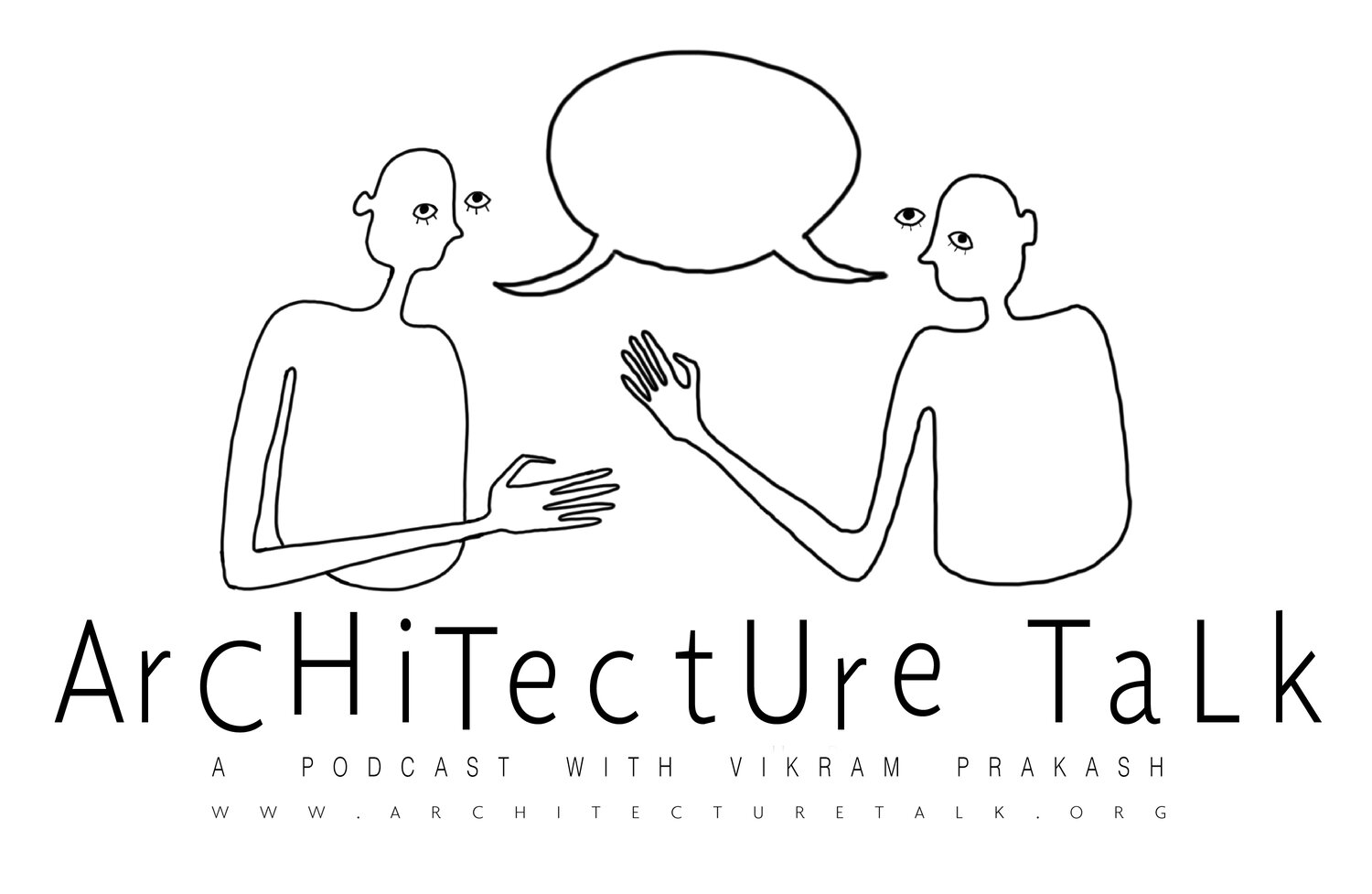104. One Continuous Line with Vikram Prakash
Original Drawing by Tori Haynes
“It is perilous to say ‘I have no influence on the authority figure’…it is equally perilous to say ‘I just serve, I am a loyal foot soldier and I serve faithfully…’ so finding your own voice in that condition is to actively corrupt…to use but mis-use. I argue that Prakash [my father] went about dealing with modernism, Le Corbusier, the modular, and the Nehruvian Legacy….he used and also abused and therefore corrupted and I argue that’ s a kind of active agency…a way to do things which is productive.”
Vikram Prakash
This week, we turn the mic back on Vikram Prakash to discuss his newly published book One Continuous Line: Art, Architecture and Urbanism of Aditya Prakash. The conversation picks up the thread of the book, mapping out and analyzing the life and multi modal work of Vikram’s father, Aditya Prakash, in Mid Century Modern India.
Timestamp Outline
* we return to this conversation now that the book One Continous Line has been released
* This is a preamble to the panel discussion planned for June 24th, 2021 with Vikram Prakash as Moderator, and with Panelists: Mark Jarzombek, Anthony Vidler, Partha Mitter, and Sunil Khilnani
00:45 Announcement of live panel discussion - is mid-century Indian Modernism still relevant today?
2:30 One Continuous Line: Art, Architecture and Urbanism of Aditya Prakash (Mapin Publishing)
4:30 “One Continuous Line” - the title of the book - refers to the underlying thread that connects Aditya Prakash’s multi-modal practices of art, architecture and urbanism together
6:00 What does it mean to inherit a father’s legacy?
6:30 Nehruvian legacy and the modernist ethos of newly independent India in the 1940s, 50s, and 60s: Jawaharlal Nehru is regarded as the founder of the Indian Modernist State.
7:30 Is midcentury modernism being put to bed?
9:50 Janus-faced approach to Modernism
11:40 Aditya Prakash’s approach to Indian modernism wasn’t simply fidelity and adherence to the Corbusian Modernist project in India, it also contained an implicit critique of it. He argued for bringing in an “Indianness” or indigeneity to the project, but also understanding the Indian condition and ethos.
16:10 Chandigarh College of Architecture (CCA) and Aditya Prakash - the reluctant academic
19:30 CIAM, or the Congres internationaux d’architecture moderne, was a congress of modern architects who aimed to advance the modern regime of architecture as a vehicle for economic, social and political improvement using the principles of the Modern Movement. Members included Le Corbusier, Pierre Jeanneret, Gerrit Rietveld, etc...
21:00 Postmodernism and entrance into the Indian debate
21:45 Charles Jenks (What, Then is Postmodernism?) argues that Post-Modernism “is not a total break from Modernism, but rather its combination with other things,” and Pruitt-Igoe - a failed urban housing project in St. Louis
22:00 The critique of Chandigarh
27:00 Colonialism (the practice of acquiring political control over another country through physical settler occupation and economic exploitation. Example: England’s control over India) and Post-Colonialism (the aftermath of Western Colonialism - the project of reclaiming one’s own history and agency after subjugation by an imperialist power)
27:30 Translation as a form of corruption and a form of empowering the local - a postcolonial practice
29:00 “[part of the] Post-colonial problem is how do you articulate your own voice given the difficulty of a topic and a subject and a figure that has paternity over you...the best way to deal with this is through carnivalization...is through parody, irony, through re-presenting, but in a corrupted fashion. It is perilous to say ‘I have no influence on the authority figure’…it is equally perilous to say ‘I just serve, I am a loyal foot soldier and I serve faithfully…’ so finding your own voice in that condition is to actively corrupt…to use but mis-use. I argue that Prakash [my father] went about dealing with modernism, Le Corbusier, the modular, and the Nehruvian Legacy….he used and also abused and therefore corrupted and I argue that’ s a kind of active agency…a way to do things which is productive.” VP
34:30 “...[Aditya Prakash] looked at the abstract geometries of Le Corbusier’s modular and, in a sense, and pragmatized them against the set dimensions of the Indian brick and therefore corrupted them, diffracted them...that is not simply a matter of cross-echoing, it is also a very specific kind of cross-echoing in the sense that it gives dignity to the humble Indian brick and with that, to the mason who lays that brick, which helps to give voice to the sub-altern subject, who remeained unvoiced in the greater modernist movement.” VP
36:00 Can the Sub-altern Speak? Spivak
38:00 Partha Mitter







